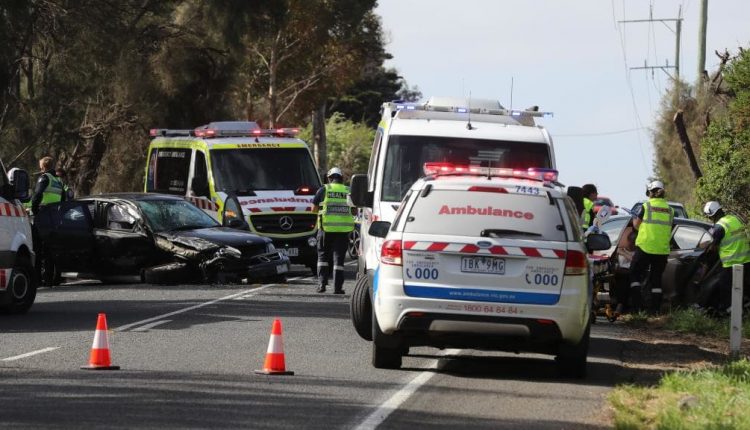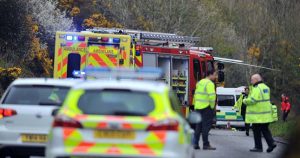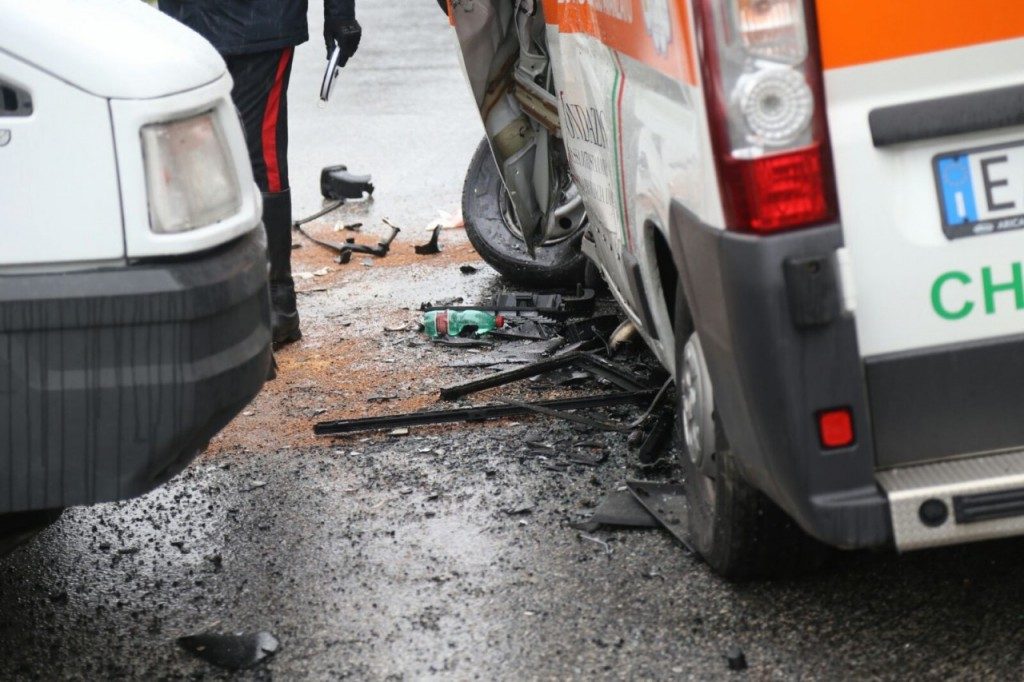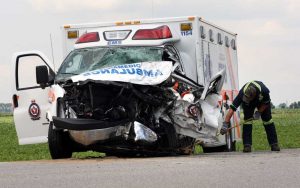
Are you sure you know how to get off the ambulance?
Over the years, many first responders died near ambulances because they stood in unsafe areas after they got off the ambulance. An ambulance safe-driving instructor answered our questions.
An ambulance has to be parked thirty meters far from the accident, the vehicle has to be turned 45 degrees to the driving axle, with steering wheels, handbrake pulled and emergency flashlights on. What is so important and true about this sentence? Stefano Balboni, an emergency medical safe-driving instructor answers.
How to get off the ambulance on an emergency scene? The subject is very important
Often it becomes underestimated and above all, it must be adequately analyzed in every single situation. In other words, environmental safety for the emergency team must not be such only in interventions on road accidents. Whenever an irregular stop is necessary to allow the crew to carry out the activities.
The rescue vehicle, in this case, the ambulance must always be clearly visible. Its positioning must be carried out in such a way that it is the vehicle itself that protects the personnel. Other drivers might lose control of his/her vehicles and causes an accident.
Get off the ambulance correctly. Parking in front of the patient’s house

The stop must be mainly carried out in any private area, taking into account the privacy of the patient, as well as trying not to park under the sun in summer (although leaving the engine running with the air conditioning on, there is still an increase in the temperature due to the overheating of the sheets and of the glass surface), furthermore avoid that the ambulance exhaust gases can enter the patient’s home
If it is essential leaving the vehicle on the road, we must consider that the ambulance has to be clearly visible to other drivers. In particular, when the ambulance is positioned after a bend, it is necessary to increase all the precautions to make it highly visible, not only to cars but also to motorcyclists, scooter riders or cycles.
Parking on a road accident scenario (without the presence of the police). How should you get off the ambulance correctly?

The positioning of an emergency vehicle near a road accident scene is subject to the presence or absence of the police and the assessment of the environmental scenario. During the approach, the first responder or the paramedic who drives the ambulance must observe, not only the scene itself but also the behaviour of the other crew members. That means checking the scenario is safe, as regards the possible presence of flammable liquids, or vehicles involved carrying dangerous goods, where in this case, staying at a safe distance – far exceeding the thirty meters mentioned above -, making reference to Kempler code (explication article at the end of the page) and, if you are not sure of it, then send a request of support to the Fire Department. The same behaviour should be applied in the event of a vehicle in flames or high-voltage poles being felled.
In the event that it is possible to intervene directly, it is necessary to appropriately assess the type of traffic present and always consider as the main rule the fact that the ambulance must serve to protect the crew during rescue manoeuvres. This happens regardless of whether a “safe” positioning can cause some discomfort to normal road traffic.
How should you get off the ambulance correctly? Last recommendations
 In the event that action is taken, for example, in an old-town centre, with traffic limited to only authorized vehicles (eg: ZTL) that run the road at very low speed, may even be less than the 30 meters mentioned to obtain optimal safety. The situation is different if the intervention scenario is on the main roads. Here, the assumption “at least 30 meters” is to be evaluated according to the actual conditions of the moment, linked to aspects like the average speed of vehicle travel, road surface, visibility also linked to atmospheric agents.
In the event that action is taken, for example, in an old-town centre, with traffic limited to only authorized vehicles (eg: ZTL) that run the road at very low speed, may even be less than the 30 meters mentioned to obtain optimal safety. The situation is different if the intervention scenario is on the main roads. Here, the assumption “at least 30 meters” is to be evaluated according to the actual conditions of the moment, linked to aspects like the average speed of vehicle travel, road surface, visibility also linked to atmospheric agents.
To make a long story short, the ambulance must be positioned “at least thirty meters of distance” so that it can serve as a shield for operating personnel. It must be positioned at 45 degrees from the normal road axis so as to be more visible and in such a way that in the event of a collision this does not become a bullet against the rescuers engaged.
As for the intervention on a motorway, the most important step to take shares the information with Law Enforcement and – eventually – the Motorway Company. It is always important to consider that on motorways if the ambulance alone stops on a lane, especially in overtaking lane, the ambulance does not provide adequate protection to the crew and therefore it is always advisable to be assisted by the Police crew and the Motorway’s Company before getting off the emergency vehicle.
In all scenarios, getting off the emergency vehicle must take place only after the approval of the first responder’s or the paramedic’s who are at the wheel.
Ambulance safety for emergency first responders – READ ALSO
Ambulance safety standards by the English NHS trusts: base vehicle specifications
New project of road safety for emergency vehicles (ambulances)
Safety helmets for rescue workers: Certifications and ideas to buy the good one
Working shoes comparison for ambulance professionals and EMS workers
Ambulance uniform in Europe. Wear and compare test by rescuers
REFERENCE
Road accidents: How paramedics recognize a risky scenario and the Kempler Code



